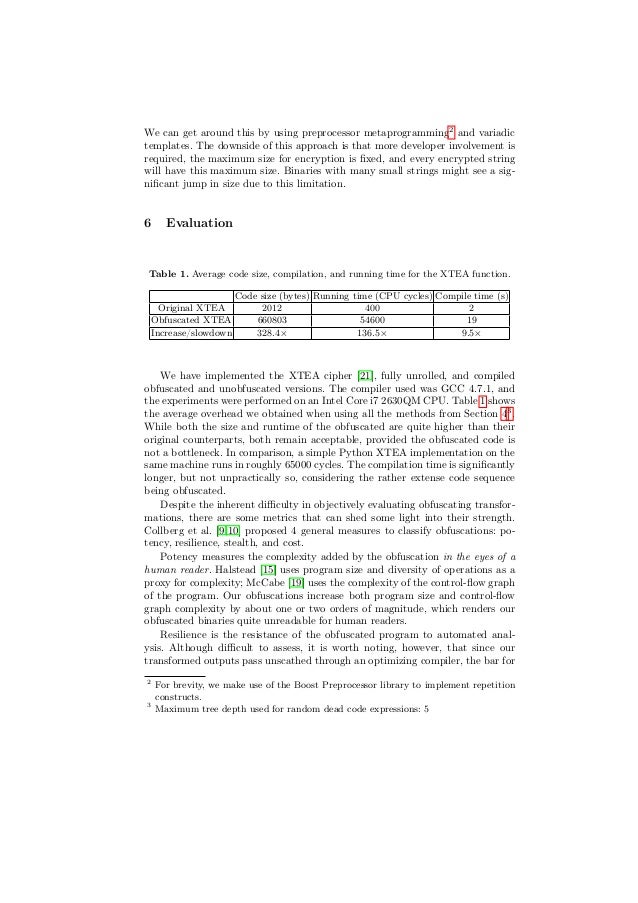Xtea Block Cipher Code
Two Feistel rounds (one cycle) of TEAGeneralDesigners,First published1994SuccessorsCipher detail128 bits64 bitsStructureRoundsvariable; recommended 64 Feistel rounds (32 cycles)Best publicTEA suffers from equivalent keys (see text; Kelsey et al., 1996) and can be broken using a requiring 2 23 and a time complexity of 2 32. The best structural cryptanalysis of TEA in the standard single secret key setting is the zero-correlation cryptanalysis breaking 21 rounds in 2 121.5 time with less than the full code bookIn, the Tiny Encryption Algorithm ( TEA) is a notable for its simplicity of description and, typically a few lines of code. It was designed by and of the; it was first presented at the workshop in in 1994, and first published in the proceedings of that workshop.The cipher is not subject to any. Contents.Properties TEA operates on two 32-bit (could be derived from a 64-bit data ) and uses a 128-bit. It has a with a suggested 64 rounds, typically implemented in pairs termed cycles.
In cryptography, XTEA (eXtended TEA) is a block cipher designed to correct weaknesses in TEA. The cipher's designers were David Wheeler and Roger Needham of the Cambridge Computer Laboratory, and the algorithm was presented in an unpublished technical report in 1997 (Needham and Wheeler, 1997). It is not subject to any patents. (XTEA) XTEA is a symmetric block cipher algorithm that is designed to correct deficiencies found in TEA, this algorithm operates in a block size of 64 bits and a key length of 128 bits 1161, in implementation XTEA will divide the plaintext into two blocks of plaintext early each with a value of 32 bits, block z. XTEA (eXtended TEA) a block cipher designed to correct weaknesses in TEA. Developers working together to host and review code, manage projects,.
It has an extremely simple, mixing all of the key material in exactly the same way for each cycle. Different multiples of a are used to prevent simple attacks based on the of the rounds. The magic constant, or 0x9E3779B9 is chosen to be ⌊2 32/ ϕ⌋, where ϕ is the (as a ).TEA has a few weaknesses. Most notably, it suffers from equivalent keys—each key is equivalent to three others, which means that the effective key size is only 126. As a result, TEA is especially bad as a. This weakness led to a method for 's, where the cipher was used as a hash function.
TEA is also susceptible to a which requires 2 23 under a related-key pair, with 2 32 time complexity. Because of these weaknesses, the cipher was designed.Versions The first published version of TEA was supplemented by a second version that incorporated extensions to make it more secure.
Xtea Java
Block TEA (which was specified along with ) operates on arbitrary-size blocks in place of the 64-bit blocks of the original.A third version , published in 1998, described further improvements for enhancing the security of the Block TEA algorithm.Reference code Following is an adaptation of the reference encryption and decryption routines in, released into the public domain by David Wheeler and Roger Needham.
Two Feistel rounds (one cycle) of XTEAGeneralDesigners,First published1997Derived fromSuccessorsCipher detail128 bits64 bitsStructureRoundsvariable; recommended 64 Feistel rounds (32 cycles)Best publicA rectangle attack on 36 rounds of XTEA (Lu, 2009) In, XTEA ( eXtended TEA) is a designed to correct weaknesses in. The 's designers were and of the, and the algorithm was presented in an unpublished technical report in 1997 (Needham and Wheeler, 1997). It is not subject to any.Like TEA, XTEA is a with a and a suggested 64 rounds. Several differences from TEA are apparent, including a somewhat more complex and a rearrangement of the shifts, and additions. Needham, David J. Wheeler (October 1997). Computer Laboratory, University of Cambridge (Technical report).

CS1 maint: Uses authors parameter. Lu, Jiqiang (2 July 2008). 'Related-key rectangle attack on 36 rounds of the XTEA block cipher'. International Journal of Information Security. 8 (1): 1–11.:.Further reading. Sekar, Gautham; Mouha, Nicky; Velichkov, Vesselin; (2011).
Topics in Cryptology – CT-RSA 2011. Lecture Notes in Computer Science. Retrieved 2018-10-10. Ko, Youngdai; Hong, Seokhie; Lee, Wonil; Lee, Sangjin; Kang, Ju-Sung (2004). Lecture Notes in Computer Science. Retrieved 2018-10-10. Hong, Seokhie; Hong, Deukjo; Ko, Youngdai; Chang, Donghoon; Lee, Wonil; Lee, Sangjin (2004).

Differential Cryptanalysis of TEA and XTEA. Information Security and Cryptology - ICISC 2003. Lecture Notes in Computer Science. Pp. 402–417.:.
Moon, Dukjae; Hwang, Kyungdeok; Lee, Wonil; Lee, Sangjin; Lim, Jongin (2002). Fast Software Encryption. Lecture Notes in Computer Science.
Retrieved 2018-10-10. Andem, Vikram Reddy (2003). (PDF) (Masters thesis).
Block Cipher Mode
The University of Alabama, Tuscaloosa. Retrieved 2018-10-10. Saarinen, Markku-Juhani (1998-08-20).
Xtea Block Cipher Codes
Retrieved 2018-10-10. Lu, Jiqiang (January 2009), (PDF), International Journal of Information Security, 8 (1): 1–11,:,External links.